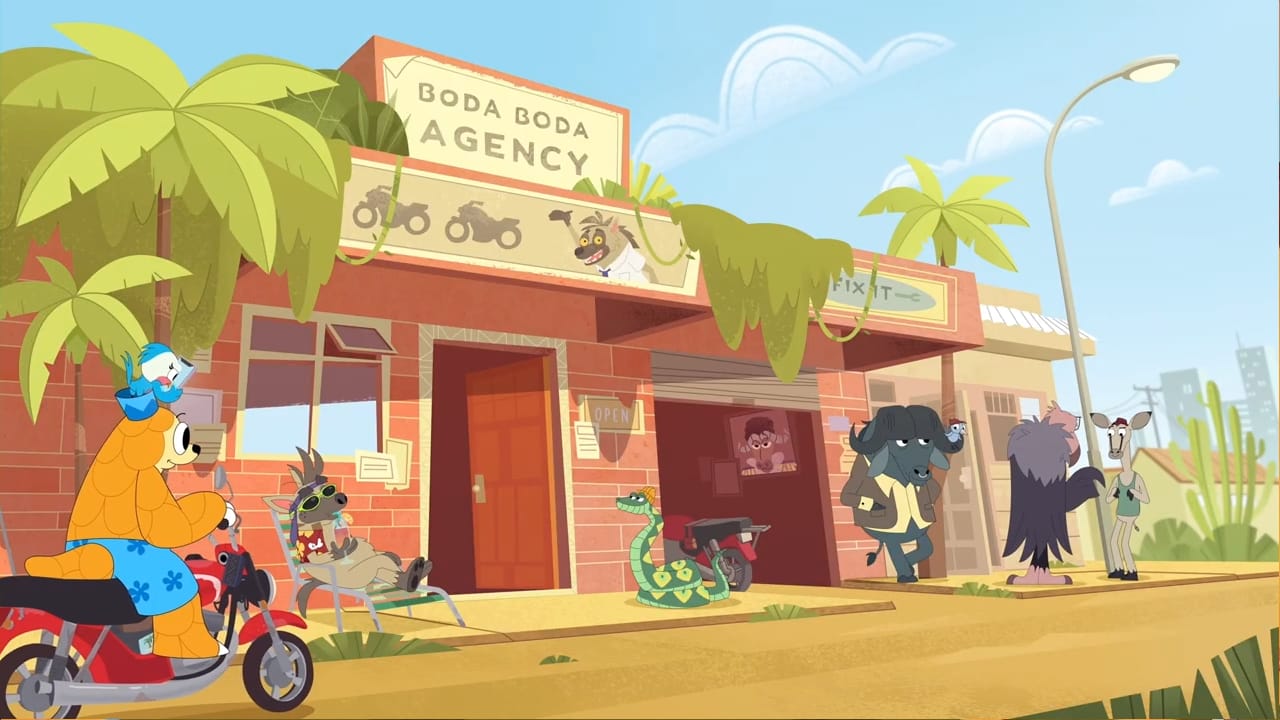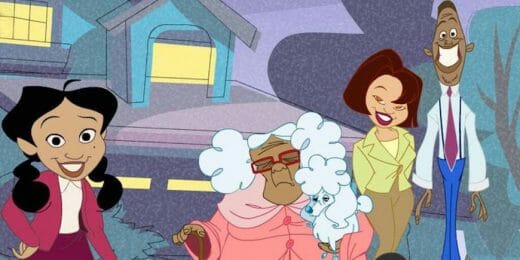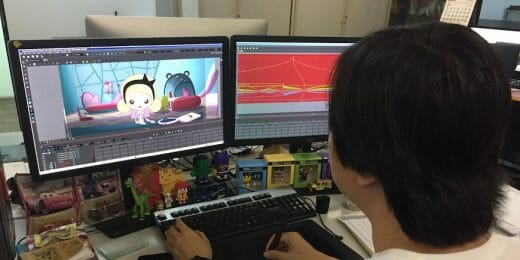
African storytelling is emerging as a vibrant force in animation, bringing forth tales rooted in both folklore and contemporary life. Among these rising stars is Twende, an animated series that will captivate audiences with loveable characters and a unique blend of adventure and humour. Following the capers of a pangolin, Twende, his friend Nuru and a host of unique characters, the animated series tells a story through an unmistakably African lens.
Taking its stylistic cues from the colourful patterns and palettes of East African garments, the striking design of the region’s signage, Twende makes a big splash that will delight fans of bold, lighthearted animation. With characters based on East Africa’s diverse and iconic wildlife, Twende creates instantly relatable characters with its simplified and graphical take on these animal forms.
We interviewed Mind’s Eye Creative‘s Nick Cloete, as well as co-creators Charlie Mass and Regan Riskas Maas about the process behind bringing this colourful animated series to life. They also share insights into how Toon Boom Harmony helped the team achieve the look for the show.
Please introduce Twende and your roles on the project…
Nick: Twende and Nuru are boda boda drivers in the vibrant town of Milima. When not causing traffic jams or scoping out the best snacks in the city, the chilled Twende and sassy Nuru constantly find adventures on the colourful African streets, where the journey is always more important than the destination. With the permanently broke Boss and speedy stuntman Kimbe at their side, they face off against Madam Mongoose and her evil tech empire, Goober, which plans to put the meddling boda boda agency out of business forever!
Nick Cloete: Supervising producer
Hélène Sifre: Co-executive producer
Charlie Maas: Co-creator
Mike Scott: Co-creator
Regan Riskas Maas: Co-creator
Kayla Archer: Co-creator
Jenna Gien: Head of production
Jelena Gartland: Head of background and layout
Ryan Van Eyk: Head of production design
Steve Cloete: Animation director
Describe the colourful art style you created for Twende, and its core components?
Nick: We aimed for Twende’s overall art style to be both fun and fresh, yet still distinctly African while appealing to a broad audience. Our inspiration stemmed from the lively patterns and vibrant colour palettes commonly seen in traditional East African garments. Additionally, our Director encouraged us to draw inspiration from the whimsical and dynamic hand-painted signs found on street vendors’ shops and buildings across East African towns, particularly the playful signage often seen in barber shops and hair salons.
The protagonist, Twende, is a Pangolin. Why did you choose that animal for his character?
Charlie: A tour of East Africa inspired the show: My older brother is always late, so we were constantly yelling at him, ‘Let’s go. Let’s go. Let’s go.’ And the guide started saying, ‘Twende! Twende!’ So, his nickname for the trip became Twende the Pole Pole Man. We wrote the original theme song in the back of that Jeep and sang it about 100 times over the next few days.”
Instead of selecting an animal that perfectly matched his character, we had already chosen a pangolin and needed to devise a way to portray a chilled-out character as the lead who drives the story forward.
What was your reference process for designing your characters after Africa’s iconic wildlife?
Nick: We aimed for the designs to be simplified and graphical, yet without compromising on volume or form. We focused on identifying the distinct patterns, markings, and grouped shapes that are iconic to the animals. Such as the Wildebeest’s large heads, their thin, scraggly hair, and the size, shape, and placement of their horns.
With a vast cast of characters and an urban setting, how does Twende reflect life in the region?
Regan: Driving through Nairobi later, we were astounded by the traffic. We couldn’t believe the many matatu buses and boda boda drivers weaving in and out of traffic. That really left an imprint on us, so we started to imagine the slowest man on the Savannah driving a boda boda, and what that might look like. And so, in true Twende fashion, it took a long, meandering yet overwhelmingly positive journey to get from there to where we are now.
What inspired the vibrant colour palette that you used on Twende?
Nick: The original artists who created the pitch bible, Mike Scott and Kayla Archer, had already established a bright and iconic colour palette for many of the main characters. However, we also drew inspiration from the warm earthy tones of the African savannah for the background colours. To avoid an overuse of earthy colours and maintain vibrancy, we infused elements with a touch of fantasy, constantly referencing vibrant African traditional patterns and hand-drawn vendor murals.
Can you share some of the unique challenges that you overcame on the project?
Nick: Counterbalancing a conception of authentically African with universal appeal. We aimed to avoid creative limitations, resulting in few instances where a library of animation cycles and backgrounds could be recycled. Each episode delved into very different situations and settings, avoiding a formulaic approach.
Consequently, we had to create a multitude of scene-specific designs. Our animation director emphasized pushing the key poses of our characters, leading to extensive exaggerated drawing and dynamic posing in our animation process.
Which tools in Toon Boom Harmony proved useful when creating Twende’s unique visual style?
Nick: We aimed for the characters to have a clean and simple line finish that was easy to maintain consistently, which is where the basic vector nature of Harmony’s line tools proved very useful. Additionally, the ability to apply features like a line-weight script came in handy when we needed to ensure a consistent line weight across shots, even when characters varied greatly in scale from shot to shot. These adjustments were easily corrected at the compositing level.
We also adopted a hybrid approach for the show, making the rigs easy to manipulate for dynamic poses and allowing for the redrawing of elements to achieve a more natural or cartoonish feel in many cases.
Do you have any advice for artists and animators looking to break into Africa’s animation industry?
Nick: Animation is a highly competitive field, with many talented individuals vying for limited positions. By honing their skills, professionals can differentiate themselves from the competition and increase their chances of securing desirable job opportunities. Employers are more likely to hire and retain talented individuals who consistently produce high-quality work and have a positive reputation in the industry.
Gaining visibility within the animation community can lead to job offers, freelance projects, and mentorship opportunities. Create an online portfolio and attend industry events.
Can you share what we can expect to see next from Mind’s Eye Creative?
More high quality 2D shorts and series. Maybe even a Twende season 2!

- Want to see more from Twende? The series is currently available on Showmax.
- Curious about Mind’s Eye Creative? Be sure to visit the studio’s homepage.
- Ready to start your own animated series? Artists can download a 21-day trial of Toon Boom Harmony.



